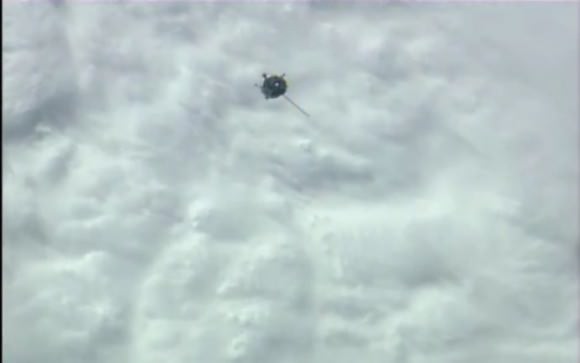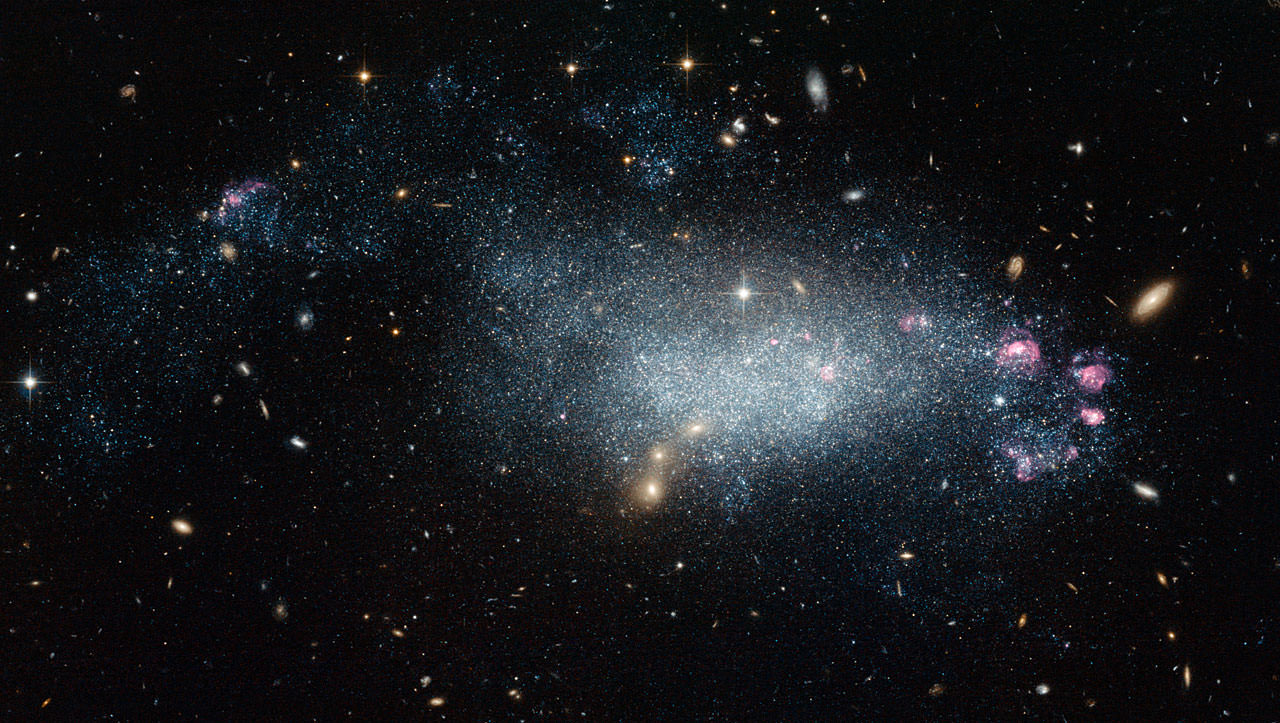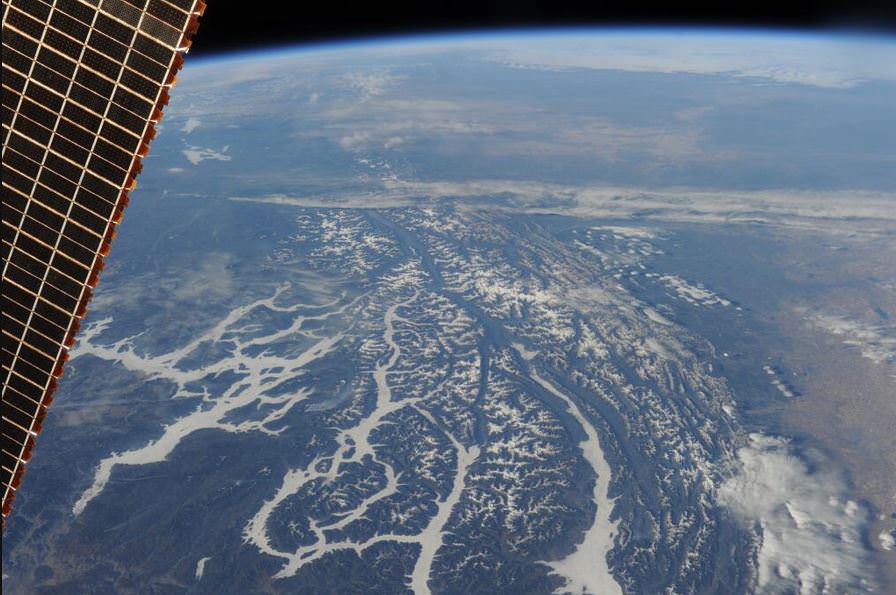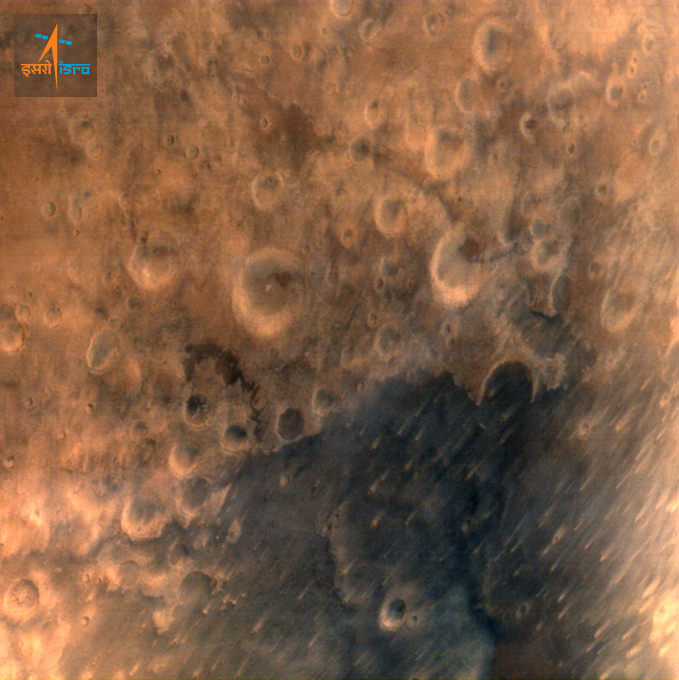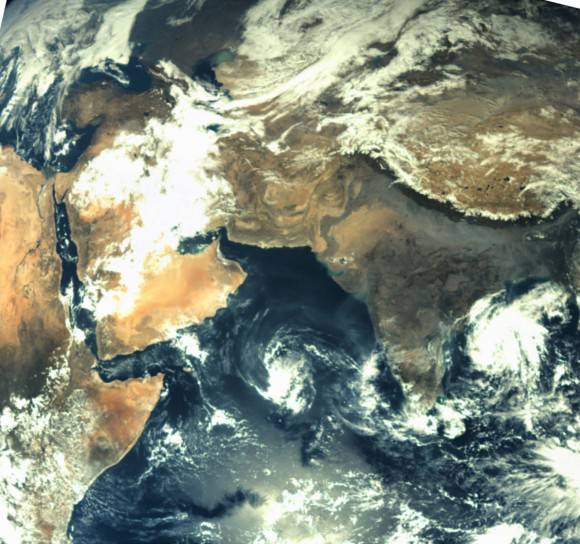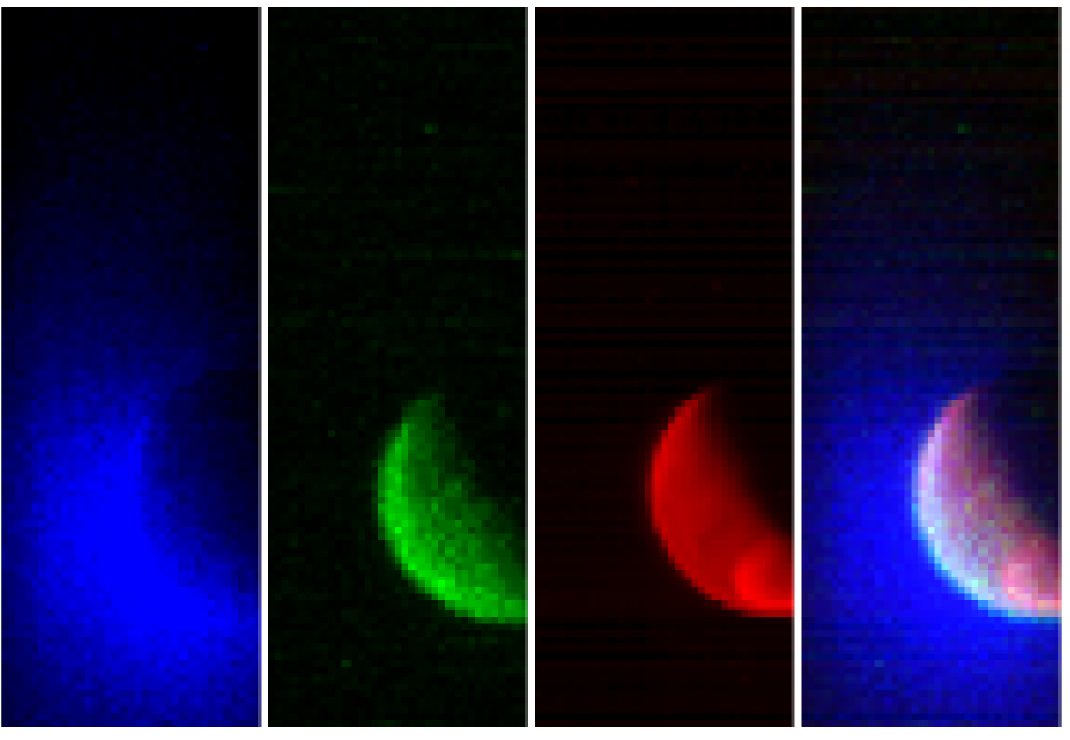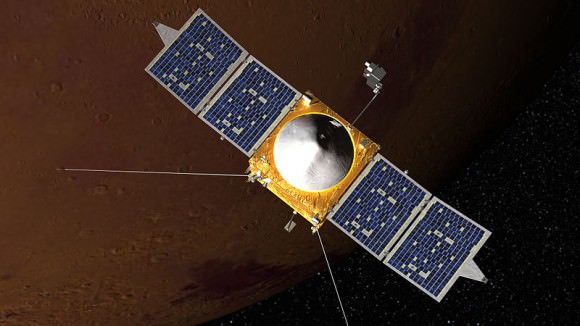Only astronomers know for sure… Or do they? In this assembly of images taken with Hubble’s Advanced Camera for Surveys, scientists have utilized both visible and infrared light to survey a most unusual galaxy. When looking for a newly formed galaxy in our “cosmic neighborhood”, they spied DDO 68 (a.k.a. UGC 5340). Normally to witness galactic evolution, we have to look over great distances to see back in time… but this particular collection of gas and stars seems to break the rules!
Researching galactic evolution isn’t a new concept. Over the last few decades astronomers have increased our understanding of how galaxies change with time. One of the most crucial players in this game has been the NASA/ESA Hubble Space Telescope. Through its eyes, scientists can see over almost incomprehensible distances – studying light that has taken billions of years to reach us. We are essentially looking back in time.
While this is great news on its own, studying progressively younger galaxies can sometimes pose more questions than it answers. For example, all the newly created galaxies reside a huge distance from us and thereby appear small and faint when imaged. On the other side of the coin, galaxies which are close to us appear to be far more mature.
Loading player…
This video begins with a ground based view of the night sky, before zooming in on dwarf galaxy DDO 68 as the NASA/ESA Hubble Space Telescope sees it. This ragged collection of stars and gas clouds looks at first glance like a recently-formed galaxy in our own cosmic neighbourhood. But, is it really as young as it looks? Credit: NASA/ESA
DDO 68, imaged here by the NASA/ESA Hubble Space Telescope, would seem to be the best example of a nearby newly-formed galaxy. Just how nearby? Estimates place it at about 39 million light years distant. While this might seem like a very long way, it is still roughly 50 times closer than other galactic examples. Studying galaxies of different ages is important to our understanding of how the Universe works. Astronomers have discovered that young galaxies are quite different than those which have aged. In this case, DDO 68 gives off the appearance of being young. These findings come from examining its structure, appearance and composition. However, researchers question their findings. It is possible this galaxy may be considerably older than initial findings indicate.
“All of the available data are consistent with the fact that DDO 68 is a very rare candidate for young galaxies.” says S. A. Pustilnik (et al). “The bulk of its stars were formed during the recent (with the first encounter about 1 Gyr ago) merger of two very gas-rich disks.”
These common events – mergers and collisions – are part of galactic life and are generally responsible for older galaxies being more bulky. These “senior citizens” are normally laced with a wide variety of stellar types – young, old, large and small. The chemistry is also different, too. Very young galaxies are rich in hydrogen and helium, making them tantalizingly similar in composition to the primordial matter created by the Big Bang. Older galaxies have more experiences. Numerous stellar events have happened within them over their lifetimes, making them rich in heavy elements. This is what makes DDO 68 very exciting! It is the best local candidate found so far to be low in heavier elements.
“DDO 68 (UGC 5340) is the second most metal-poor star-forming galaxy,” explains Pustilnik. “Its peculiar optical morphology and its HI distribution and kinematics are indicative of a merger origin. We use the u, g, r, and i photometry based on the SDSS images of DDO 68 to estimate its stellar population ages.”
Step into the light? You bet. The Hubble observations were meant to examine the properties of this mysterious galaxy’s light – determine whether or not it contains any older stars. If they are discovered, which seems to be the case, this would disprove the theory that DDO 68 is singularly comprised of younger stars. If not, it will validate the unique nature of this nearby neighbor. While more computer modeling and studies are needed, we can still enjoy this incredible look at another cosmic enigma!
Original Story Source: A Galaxy Of Deception – Hubble/ESA
